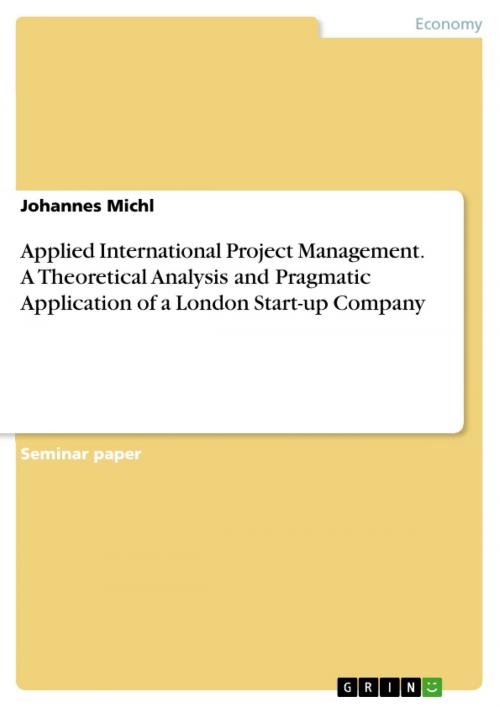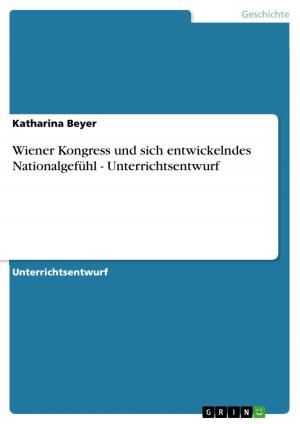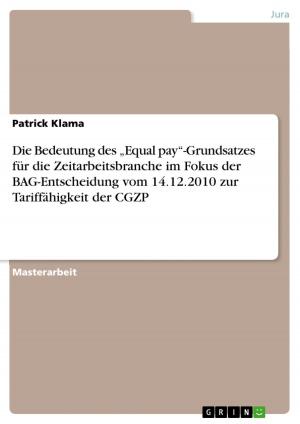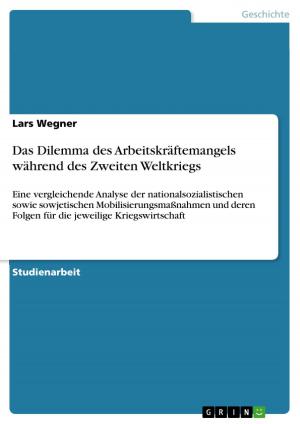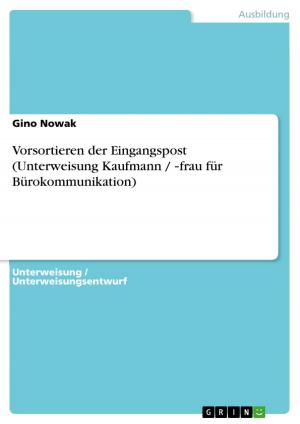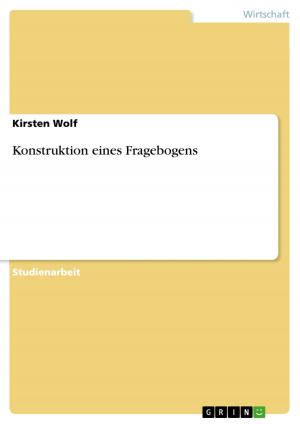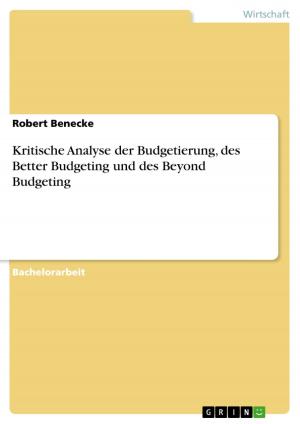Applied International Project Management. A Theoretical Analysis and Pragmatic Application of a London Start-up Company
Business & Finance, Entrepreneurship & Small Business, New Business Enterprises| Author: | Johannes Michl | ISBN: | 9783656975700 |
| Publisher: | GRIN Verlag | Publication: | June 10, 2015 |
| Imprint: | GRIN Verlag | Language: | English |
| Author: | Johannes Michl |
| ISBN: | 9783656975700 |
| Publisher: | GRIN Verlag |
| Publication: | June 10, 2015 |
| Imprint: | GRIN Verlag |
| Language: | English |
Seminar paper from the year 2014 in the subject Business economics - Company formation, Business Plans, grade: 1,0, University of Applied Sciences Deggendorf, language: English, abstract: The goal of this paper is to evaluate international project management at XY and to make recommendations for a better project cooperation. Therefore, first the typical project management approach at this company is examined. In a second step problems and weaknesses of the process are identified, to present in a third step possible solutions. This paper the project management approach of XY is described from the perspective of the author. For a higher degree of detail one would have to question more employees of the company who participated in projects. Moreover, when having a look at the cultures, not all of the cultures that are found at XY are considered, because that would exceed the scope of the pa-per. Certain cultures are selected to make a point clear. Lastly it also was not tested whether or not the recommendations are practical. In chapter two, the company XY is briefly introduced. A larger version of the organizational chart of the firm can be found in the appendix A. The subsequent third chapter presents the current project management approach at XY. This process is divided into: project initiation, project planning, action and control and finishing the project. The fourth chapter points out problems related to the project management approach and additional cultural and language specific problems. The cultural Indexes, which help to categorize the cultures, can be found in the appendix. The recommendations for improvement are described in chapter five. The paper is completed in chapter six with a conclusion. For the preparation of this paper, primarily textbooks were used, which can be found in the appendix listed alphabetically. More knowledge was obtained from websites. Lastly the experiences of the author at a six-month internship at XY were essential to describe the project work there.
Seminar paper from the year 2014 in the subject Business economics - Company formation, Business Plans, grade: 1,0, University of Applied Sciences Deggendorf, language: English, abstract: The goal of this paper is to evaluate international project management at XY and to make recommendations for a better project cooperation. Therefore, first the typical project management approach at this company is examined. In a second step problems and weaknesses of the process are identified, to present in a third step possible solutions. This paper the project management approach of XY is described from the perspective of the author. For a higher degree of detail one would have to question more employees of the company who participated in projects. Moreover, when having a look at the cultures, not all of the cultures that are found at XY are considered, because that would exceed the scope of the pa-per. Certain cultures are selected to make a point clear. Lastly it also was not tested whether or not the recommendations are practical. In chapter two, the company XY is briefly introduced. A larger version of the organizational chart of the firm can be found in the appendix A. The subsequent third chapter presents the current project management approach at XY. This process is divided into: project initiation, project planning, action and control and finishing the project. The fourth chapter points out problems related to the project management approach and additional cultural and language specific problems. The cultural Indexes, which help to categorize the cultures, can be found in the appendix. The recommendations for improvement are described in chapter five. The paper is completed in chapter six with a conclusion. For the preparation of this paper, primarily textbooks were used, which can be found in the appendix listed alphabetically. More knowledge was obtained from websites. Lastly the experiences of the author at a six-month internship at XY were essential to describe the project work there.
